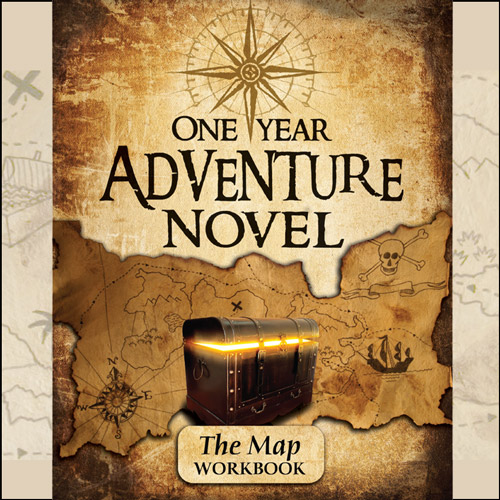How One Smart Scene Can Pull the Weight of Many
 By Rachel Garner, Staff Writer
By Rachel Garner, Staff Writer
The following is a story I have shared with several of my students in Story Coaching. It is only in explaining it that I really made sense of it, and I’m sharing this distilled version now in the hope that it can help others. Critiquing others helps you become a better writer—we all know that. But it still seems weird to me somehow that this should prove true when critiquing is my job!
For six years, I couldn’t figure out how to write an opening scene for my book.
It’s a running joke among my friends that I’m an obsessive editor—I’ve spent nearly ten years now on the book itself—but my struggles with chapter 1 were especially ridiculous.
The problem was I needed to accomplish two things fairly quickly at the beginning of the novel:
- Establish my main character’s relationship with her father
- Introduce two characters who are extremely important to my main character and the entire plot of the book
When I wrote the rough draft, the solution seemed simple: have a scene with her dad and have a scene that introduces the other two guys. In practice, though, the second scene was 99% more interesting than the first one. It had conflict, tension, mystery, and stronger world-building. The relationship between my main character and her father wasn’t angry or abusive—it was simply indifferent. Writing about it was boring, especially as an opening scene.
In editing, I kept doing the same thing over and over again. I’d place a scene with her dad at the very beginning. I’d lop it off to get to the much more interesting action of the second scene. I’d do a rewrite of the scene with her dad and stick it in front again. Get annoyed, lop it off. Feel like I was missing something, put it back on again. On, off, on, off.
When I finally did an edit of the second scene that I truly liked, I thought team “off” had won—but this wasn’t true. When I looked closely at the scene I realized I’d combined the two ideas. Her dad was already in the second scene! The way my main character described him and her interactions with him, even as all the interesting character introductions were going on, showed exactly what I’d been trying to accomplish with those boring argument scenes.
In spite of this revelation, I still have this “add a scene” gut reaction when I know something is missing, and I think this is probably common. Need to foreshadow for something later in the book? Add a scene. Need to establish a relationship with a minor character? Add a scene. Need to get across the fact that the main character went to a group meeting a second time? New scene!
The problem is, this isn’t always the right reaction, especially if the scene in question isn’t interesting. Scenes that exist for one purpose alone are particularly likely to lack tension and slow the pace. But as my six years of turmoil show, just cutting them isn’t always an option.
I started to think in terms of layering scenes—of making them do double, triple, quadruple duty. Sometimes the layering can be pretty subtle—where the reader can just sense that the author knows more than they’re giving.
It turns out that I did a third thing with that opening scene—I not only established the father–daughter relationship and introduced two key characters, I also established the relationship between those two important characters. My heroine doesn’t really know what’s going on between them, and so neither does the reader—but both eventually will know more. They won’t ever know as much as I needed to know to create that scene, but I think that’s part of what makes characters feel real.
Finally fixing the first scene of my novel was a happy accident (okay, it involved a lot of tears-inducing work through which I stumbled across the solution by accident). Recently I wrote a short story, however, in which I went into it consciously thinking about this layering concept.
Here’s how it went.
I had to get my character from one meeting to a second meeting. I had this transition listed as a scene on my outline and everything, but I soon realized I could address it this way: 1) open a completely different scene with a character casually mentioning that he attended a second meeting and briefly relating a few character anecdotes; and 2) move anything about the second meeting that would be more interesting in detail mode than summary mode into the first meeting, which was already more important and had higher stakes. Doing this allowed me to move on quickly to new conflict while signaling to the reader that time had passed.
In my early brainstorming, I knew I wanted my main character interacting with people of varying worldviews who all have opinions, sometimes overlapping, about what he should do. I had 7–10 different characters. I realized it would be overwhelming and distracting to actually go into depth on all of these situations. With layering in mind, I picked the strongest threads and decided to leave hints to the others. If I succeeded, I would be able to drop these hints through only a few key snatches of dialogue.
I also identified that some of these ideas did not each need a character to represent them. I replaced the characters by injecting their ideas into my main character’s own musings. This gave me the space to expand his time alone with his thoughts, which was very important to the kind of story I was trying to tell. This was a bit of a gamble, but when I passed this story to a beta reader she understood the importance of all the different worldviews, even though some were represented only by a few lines or buried in my main characters’ thoughts. If I got negative feedback from other beta readers, I would just edit to add even more layering.
Even to me, layering scenes is still more of a concept than a concrete plan of attack. But I have already found it very helpful. I would urge you to look at any scene that seems necessary but boring—whether written already or not—and consider in what ways it could be combined with other scenes. The action of one scene could very well contain the emotions, relationship, or concepts of another. The cool thing about this is not only does it eliminate boring sections, it adds dimension and depth to the exciting ones.
…
Have you ever used layering, consciously or unconsciously, to breathe life into a boring scene?
…
 About Rachel
About Rachel
Rachel was one of the seven students—or self-labeled “guinea pigs”—who took part in the pilot class for The One Year Adventure Novel. Known as “Nairam” in the extended OYAN community, Rachel is an example of dedication to her craft and a gifted editor. She is also a kind and forthright writing mentor to students at every level of the program, and a Story Coach. A homeschool graduate, she is now in college studying history. When not hiding out in the medieval England section of her school library, she edits her Robin Hood retelling and pretends that ten years is definitely not too long to spend on a single writing project.



This is a really helpful technique! I can’t wait to get my hands on a notebook and try to fix some of those fiddly scenes.
There’s a lot of writing advice out there against writing boring scenes, but this is the first time I’ve seen good advice on how to *fix* them.
Yay! I’m glad you’ve found it helpful. I hope editing goes well for you!